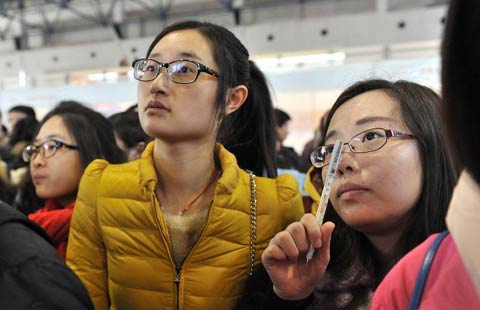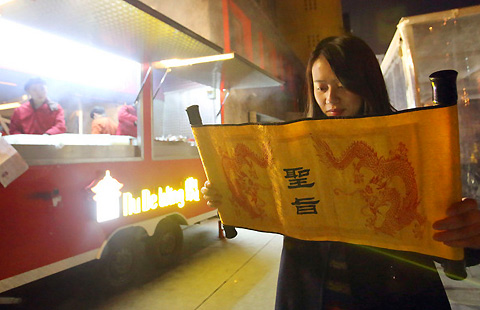Graveyard for jets planned in nation's Ice City
(Agencies) Updated: 2014-12-19 07:44Already poised to become the world's biggest buyer of new planes, China also wants to build a graveyard for old aircraft.
China Aircraft Leasing Group Holdings Ltd is investing $2 billion to build the country's largest plane disassembly plant in Harbin-known as China's Ice City.
The facility is aimed to be able to tear apart 50 aircraft annually after five years, with a goal to become one of the largest such plants in the world.
"The headlines for aircraft in Asia are about new deliveries, but there will be significant retirement of old aircraft," said Will Horton, a Hong Kong-based analyst at the CAPA Center for Aviation.
China's foray into the field comes as Boeing Co, the world's largest plane maker, also is exploring ways to wring money from the end of a jetliner's life. With the value of parts potentially outweighing an old jet's resale price, the $3.2 billion a year market for used aircraft parts is growing as companies discard planes well before the end of their 30-year life cycles.
The scrap-aircraft industry is concentrated mainly in the United States, a mix of closely held operators such as Aircraft Demolition LLC-which works out of Arizona's Pinal Airpark, known for its open-air storage-and publicly traded companies like AAR Corp.
Some 48 percent of all aircraft deliveries in the past five years were to replace aging planes, compared with the historical average of 43 percent, said China Aircraft Leasing, Asia's first plane lessor to go public, also known as CALC, citing data from Ascend Flight Global Consultancy.
In April, the Washington-based Aircraft Fleet Recycling Association said as many as 1,800 aircraft will be dismantled around the world in the next three years, citing industry operators.
Typically, deserts are seen as ideal spots for disassembly, since the dry conditions reduce corrosion. More than 60 companies are based out of Mojave Air & Space Port in California, one of the world's leading centers for flight testing, space technology and jet maintenance and storage.
In contrast, Harbin is known for its bitterly cold winters and annual ice sculpture festival. The city, which is also the capital of Heilongjiang province, is the heart of China's industrial northeast.
"It would be interesting to see what the exact plans are and how they plan to accommodate Harbin's long and cold winters," said CAPA's Horton. "Disassembly is normally done outdoors."
The sector is in its infancy in China, with the first disassembly carried out just last year by GA Innovation China, a venture between GA Telesis LLC and Air China Ltd.
CALC's proposed facility is part of a broader plan to revive China's northeast. Brazilian aircraft manufacturer Embraer SA has an assembly facility in Harbin, a joint venture with Aviation Industry Corp of China.
China is expected to be a driving force in the aviation industry in coming years. The country will need about 5,300 new planes, valued at $820 billion, by 2033, Airbus Group NV said on Dec 10, representing 17 percent of global demand for new planes in the next 20 years.
"With the prompt development of China's aviation industry and the rapid expansion of airline fleets, the number of old retiring aircraft has been increasing every year," CALC said in a Dec 4 statement.
Potential regulatory hurdles to CALC's plan remain, however.
It is unclear, for instance, whether the current practice in China to restrict imports of jetliners more than 10 years old, and air freighters above 15 years old, would apply to planes brought in just to be taken apart, said Dennis Lau, an aviation analyst with Ascend.
- Avon pays fine of $135m to settle bribery allegations
- Pingtan to play key role in economic cooperation
- Tariff ruling further dims solar prospects in United States
- Job seekers attend job fair for postgraduates
- Housing market touches bottom, NBS figures show
- Top 10 immigration destinations for Chinese
- Coal companies on the edge as sales nose-dive
- Viptera corn 'approved' for import

















